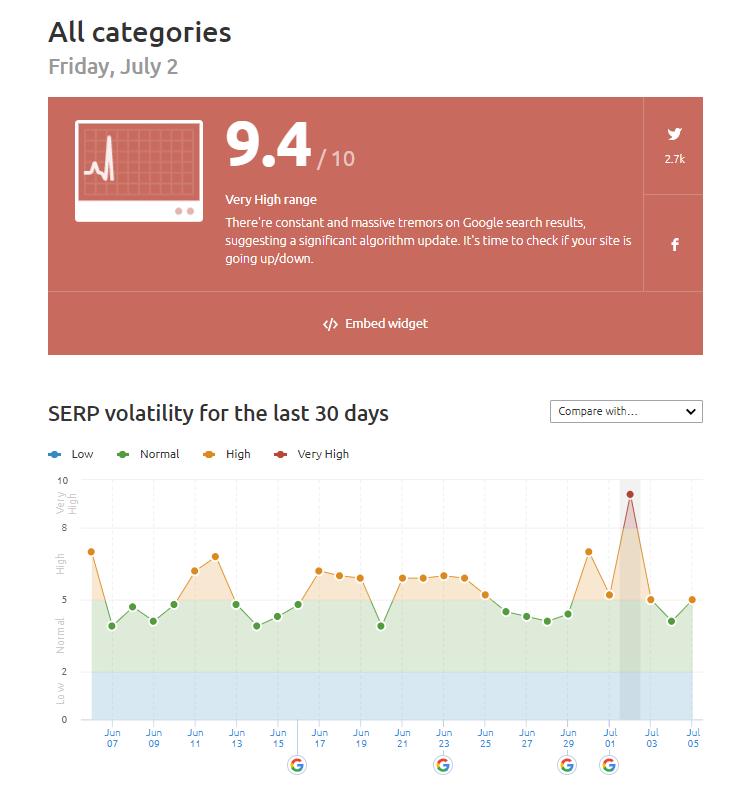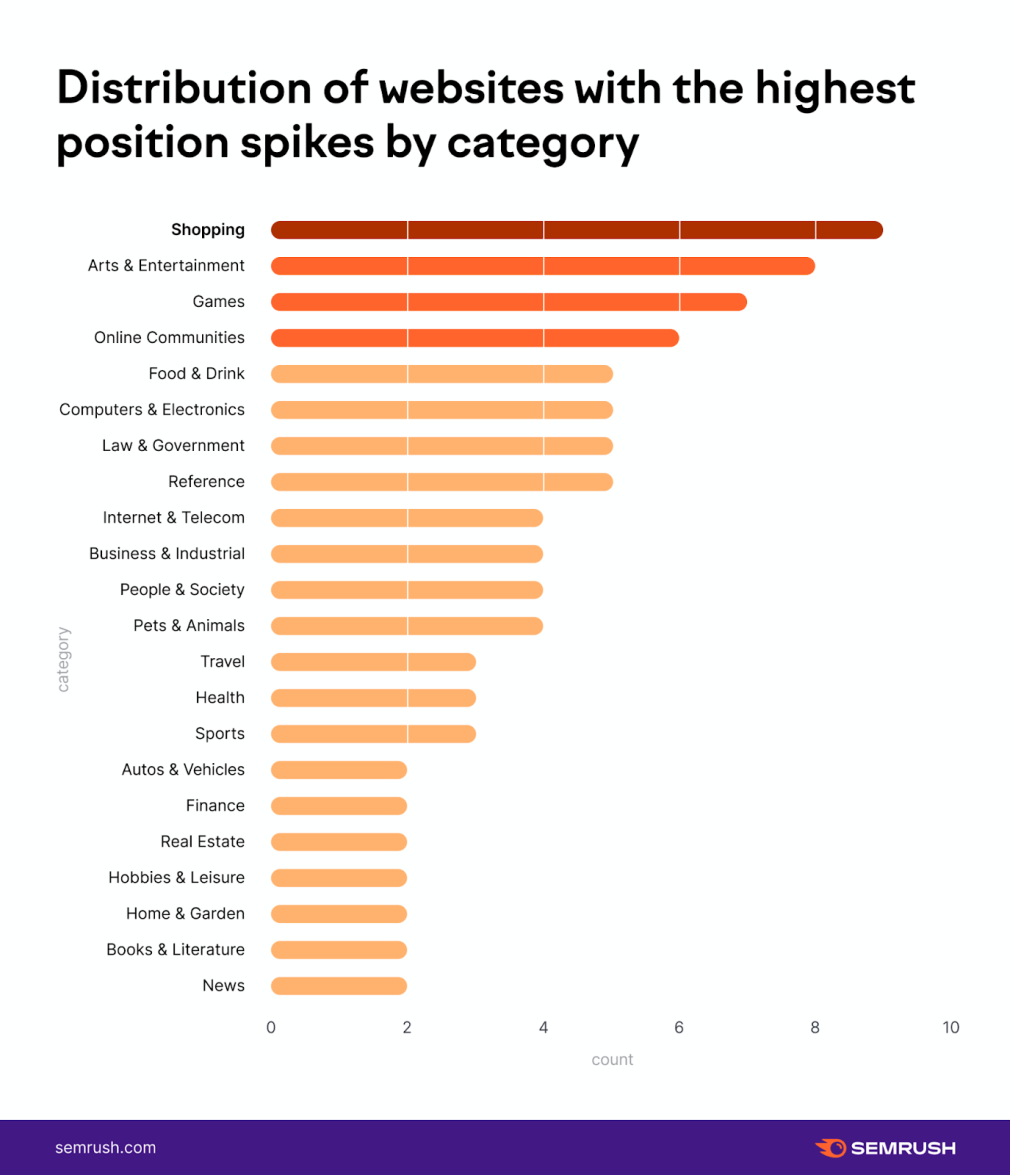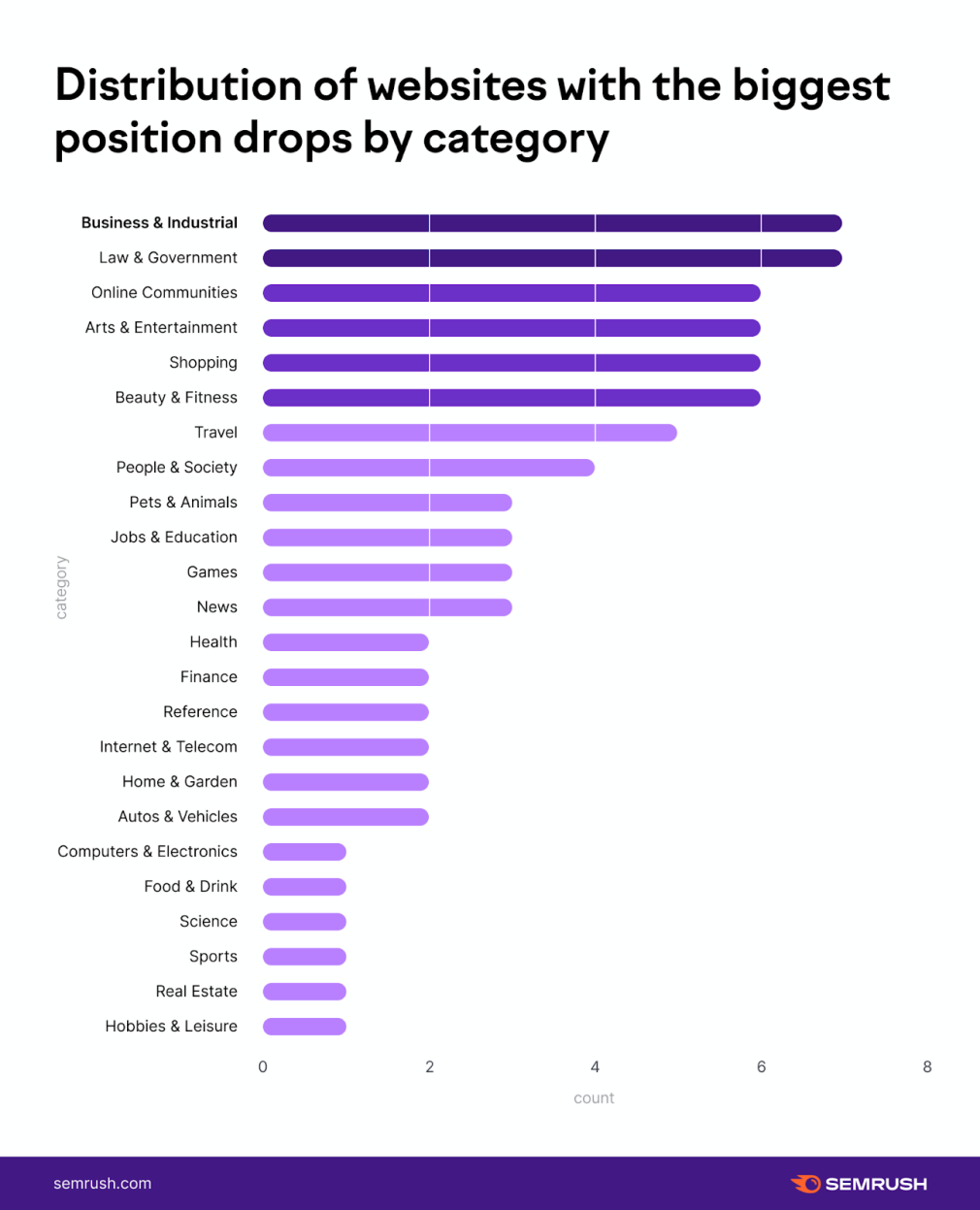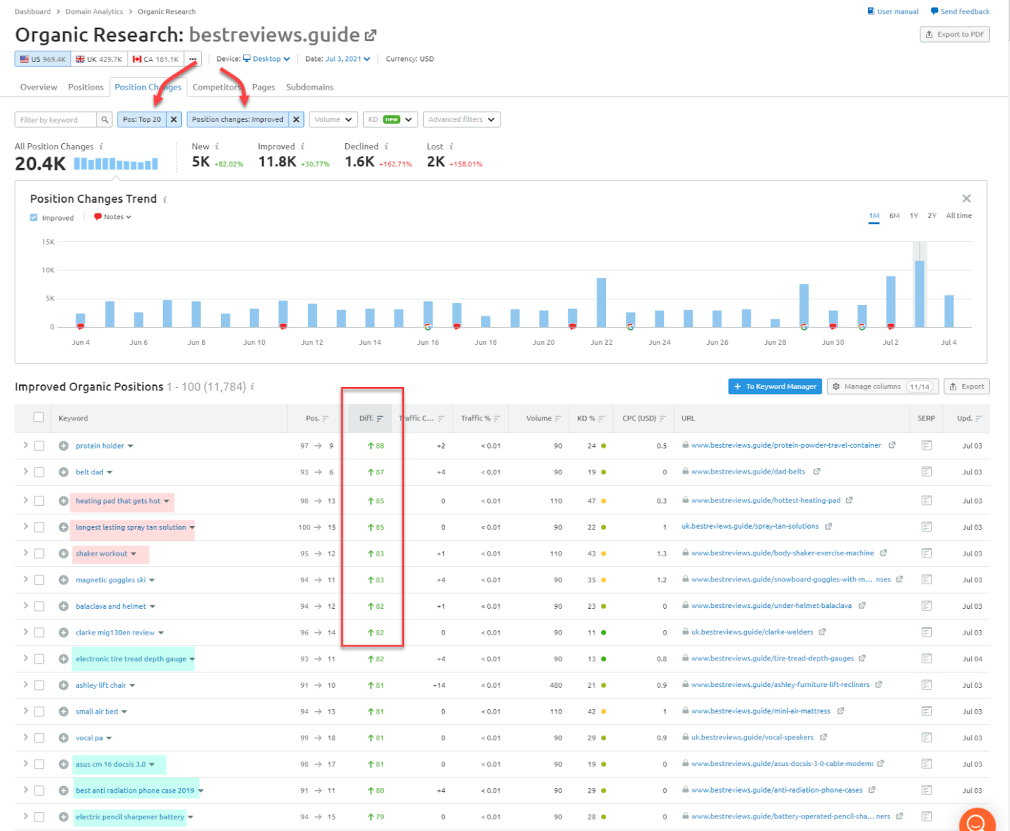As announced at the beginning of Google’s June 2021 Core Update, July 1st was marked by a new July 2021 Core Update.
The July 2021 Core Update, previously announced, is now rolling out: https://t.co/6Xs77WDsur
— Google SearchLiaison (@searchliaison) July 1, 2021
These typically take 1-2 weeks to finish. Our guidance about such updates is here: https://t.co/e5ZQUA3RC6
Here’s more on how we improve search through updates: https://t.co/IBmInwGOiX
While any core update is a significant event that should be carefully monitored, the July 2021 Core Update is quite unique.
Upon announcing the June 2021 Core Update, Google’s Search Liaison, Danny Sullivan, indicated that the June update would be followed by a second core update in July.
Later today, we are releasing a broad core update, as we do several times per year. It is called the June 2021 Core Update. Our guidance about such updates is here: https://t.co/e5ZQUA3RC6
— Google SearchLiaison (@searchliaison) June 2, 2021
This will be followed by the July 2021 Core update. Here’s more information about that…
The reasoning was that aspects of the June update were not yet fully ready. Instead of waiting for all elements of the update to be ready for roll-out, Google decided to release the update in two separate parts. These parts are reflected in the June 2021 Core Update and the July 2021 Core Update.
This all begs the question, what happened during the July 2021 Core Update, and what sort of connection did it have to the June 2021 Core Update?
The Impact of the July 2021 Core Update
Let’s start with the July update independent of its June counterpart.
On July 2nd, Semrush Sensor began tracking significantly high levels of rank fluctuations and reflected an overall volatility score of 9.4/10 on both desktop and mobile.

As is typical with any algorithm update, the levels of rank volatility varied across industries.
In terms of pure rank volatility, six different niche industries saw volatility scores of 9 or higher.
| Category | Average volatility over July 01-02 |
| Online Communities | 9.3 |
| Internet & Telecom | 9 |
| Arts & Entertainment | 9.3 |
| Games | 9.3 |
| Sports | 9.2 |
| News | 9.3 |
Absolute volatility numbers can be misleading, though. Sites that comprise the news industry, for example, traditionally show high levels of rank fluctuations on a consistent basis (since what was relevant for a news keyword one day could be entirely irrelevant the next day as the news changes).
If we look at which industries saw the greatest increasein rank volatility at the onset of the July update, we get a very different picture.
| Category | Volatility change, July |
| All categories | 2.2 |
| Real Estate | 3.7 |
| Shopping | 3.3 |
| Beauty & Fitness | 3.2 |
| Science | 3 |
| Pets & Animals | 2.9 |
| Online Communities | 2.8 |
| Hobbies & Leisure | 2.7 |
| Internet & Telecom | 2.6 |
| Autos & Vehicles | 2.5 |
| People & Society | 2.4 |
| Books & Literature | 2.4 |
| Business & Industrial | 2.4 |
| Reference | 2.1 |
| Home & Garden | 2.1 |
| Health | 2 |
| Law & Government | 2 |
| Computers & Electronics | 2 |
| Travel | 1.9 |
| Finance | 1.8 |
| Arts & Entertainment | 1.7 |
| Games | 1.6 |
| Sports | 1.6 |
| Jobs & Education | 1.5 |
| Food & Drink | 1.3 |
| News | 0.5 |
The Real Estate, Shopping, Beauty & Fitness, Science, and Pets & Animals industries saw the steepest increases in rank volatility at the hands of the July 2021 Core Update.
The Finance, Arts & Entertainment, Games, Sports Jobs & Education, Food & Drink, and News industries saw the least dramatic increases.
Again, the News industry is a great example as here we are measuring increases in volatility, not the overall level of volatility per se. If an industry is constantly volatile, then it may not show the greatest increase in volatility pre and post update.
Comparing June 2021 Core Update to the July 2021 Core Update
There is a specific connection between the June and July updates, so it would make sense to also compare the two.
To do this, we tracked a period of rank stability that preceded the June update to determine the volatility increases seen during the update itself. The same was done for the July update.
We then compared the volatility increases seen during the June and July updates to pinpoint which update was more impactful overall.
The results are stark. The June update saw rank volatility increases that were on average 42% more significant than what we spotted in July.
This was the case across the board for all industries.
| Category | Percentage change: June vs. July |
| All categories | 44% |
| Food & Drink | 73% |
| Jobs & Education | 66% |
| Travel | 63% |
| Health | 62% |
| News | 62% |
| Law & Government | 57% |
| Reference | 51% |
| Autos & Vehicles | 51% |
| Computers & Electronics | 50% |
| People & Society | 49% |
| Finance | 47% |
| Home & Garden | 43% |
| Pets & Animals | 43% |
| Books & Literature | 43% |
| Science | 41% |
| Games | 38% |
| Hobbies & Leisure | 37% |
| Internet & Telecom | 28% |
| Beauty & Fitness | 27% |
| Business & Industrial | 25% |
| Online Communities | 24% |
| Sports | 24% |
| Arts & Entertainment | 23% |
| Real Estate | 20% |
| Shopping | 8% |
| Total average | 42% |
Some industries’ volatility levels were more closely matched across both updates than others.
The gap between the June and July updates was less noticeable for the Shopping, Real Estate, Arts & Entertainment, Jobs & Education, and the Online Communities. Here, the rank volatility increases seen during the June update were less drastic as compared to the July update with the gap being less than 25% for these industries.
Mobile Data
The data trends shown above, for desktop, were quite similar on mobile.
Just as on desktop, the June update resulted in significantly more rank volatility across all industries. Compared to desktop, however, mobile showed a slightly larger gap between the June and July updates.
While the June update saw volatility increases that were an average of 42% more significant than what was seen during July, that number jumps to 47% on mobile.
| Percentage change: June vs. July (desktop) | Percentage change: June vs. July (mobile) | |
| All categories | 44% | 49% |
| Food & Drink | 73% | 54% |
| Jobs & Education | 66% | 71% |
| Travel | 63% | 65% |
| Health | 62% | 67% |
| News | 62% | 28% |
| Law & Government | 57% | 71% |
| Reference | 51% | 53% |
| Autos & Vehicles | 51% | 40% |
| Computers & Electronics | 50% | 58% |
| People & Society | 49% | 51% |
| Finance | 47% | 42% |
| Home & Garden | 43% | 47% |
| Pets & Animals | 43% | 55% |
| Books & Literature | 43% | 45% |
| Science | 41% | 47% |
| Games | 38% | 58% |
| Hobbies & Leisure | 37% | 34% |
| Internet & Telecom | 28% | 42% |
| Beauty & Fitness | 27% | 27% |
| Business & Industrial | 25% | 34% |
| Online Communities | 24% | 36% |
| Sports | 24% | 45% |
| Arts & Entertainment | 23% | 50% |
| Real Estate | 20% | 37% |
| Shopping | 8% | 25% |
| Total average | 42% | 47% |
As the chart shows, the following industries saw the highest discrepancies between the June vs. July core update volatility:
- Law & Government and Jobs & Education sectors were 70% more volatile during the June update;
- Health and Travel sectors’ fluctuations were 65%+ more significant shortly after the June update; and
- The Games sector was 54% more volatile.
Was the July Update a Reversal of the June Update?
One of the more common questions circulating around the industry was whether or not the July update would reverse the ranking changes seen in June.
Rank reversals are a normal part of any update. Often, a page might initially be negatively impacted by an update only to be restored by the end of the update’s roll-out.
However, due to the purposeful connection between the June and July updates, you would have to wonder if the reversals would increase in this case.
An initial review would seem to imply not.
Looking at the top 200 most impacted domains, only 15 of them (or 7.5%) were impacted during both the June and July updates. Out of those 15 domains, only 10 (or 5% of the total 200 domains) showed a ranking reversal between the June and July updates.
Data indicates that the July update was not fundamentally a reversal of the June update.
Rather, it would appear that each algorithm update impacted sites in a unique way.
This aligns with how Danny Sullivan initially presented the two updates, saying, “Some of our planned improvements for the June 2021 update aren’t quite ready, so we’re moving ahead with the parts that are…” This means each update improved how Google goes about showing the most relevant and highest quality results in its own way.
The Winners and Losers of the July 2021 Core Update
Now that we understand the relationship between the two updates, let's have a look at the aftermath of Google’s July broad core algo update.
To assess the most impacted site categories (and sites), we analyzed the top 100 domains that saw the biggest position gains and drops.
SERP Winners
A top-level view shows that more than 30% of the top 100 domains that saw the greatest ups during the July update came from the Shopping, Arts & Entertainment, Games, and Online Communities industries.

On average, the winning sites gained 19 positions vs. the June update’s 23-position spike.
Top 10 SERP Winning Domains (July 1-2)*
| Domain | Gained positions July update | Average position July update | Сategory |
| 68 | 11 | Internet & Telecom | |
| 53 | 12 | Shopping | |
| 48 | 13 | Business & Industrial | |
| 37 | 13 | Online Communities | |
| 35 | 3 | Travel | |
| 34 | 14 | Business & Industrial | |
| 31 | 4 | Online Communities | |
| 30 | 12 | Arts & Entertainment | |
| 28 | 14 | People & Society | |
| 28 | 11 | Arts & Entertainment |
*Please note that the data was collected by Semrush Sensor. This tool automatically checks a sample of SERPs on a daily basis. Data in this article is taken from the tool with no manipulations to compile a list of the biggest winning domains.
SERP Losers
In terms of industries, there is a bit of overlap as the Shopping, Online Communities, and Arts & Entertainment industries all produced a significant number of sites within both categories of impact (i.e., positive and negative impact).
38% of the domains most negatively impacted by the update came from the Business & Information, Law & Government, Online Communities, Arts & Entertainment, Shopping, and Beauty & Fitness industries.

While the July update’s position gains were weaker than June’s, the losses among the most impacted sites were more significant. On average, those on the losing side lost 20 positions vs. June’s 16.
Despite their losses, the average URL from the top 100 sites most negatively impacted by the July update still ranks at the 16th position.
Top 10 SERP Losing Domains (July 1-2)*
| Domain | Lost positions | Average position now | Category |
| -71 | 17 | Travel | |
| -67 | 16 | Business & Industrial | |
| -50 | 17 | Business & Industrial | |
| -46 | 19 | Finance | |
| -38 | 16 | Health | |
| -36 | 16 | Business & Industrial | |
| -33 | 17 | Finance | |
| -33 | 20 | Online Communities | |
| -33 | 18 | Travel | |
| -32 | 17 | Online Communities |
*Please note that the data was collected by Semrush Sensor. This tool automatically checks a sample of SERPs on a daily basis. Data in this article is taken from the tool with no manipulations to compile a list of the most winning domains.
Pro Tips When Analyzing Domains Impacted by an Update
Identifying domains that have been impacted by an update can produce very insightful information. When such domains belong to you, your clients, or the competition, these insights can help you make changes to your current strategies.
Here are the two best ways to go about it:
- Keep An Eye On Historical Trends
It pays to look at the bigger picture to better contextualize any ranking movement.
Here, we have a site that would indicate significant growth if we only looked at the last month’s data. If we use the Organic Research Tool to take a wider look at the historical trends, however, we’d get a different picture.

The site in question showed a significant ranking drop and traffic losses circa the December 2020 Core Update. What appears to be occurring in July is perhaps the start of the domain’s recovery. (Yes, reversal trends can span over the course of months.)
If this was your site or one of your competitors, pay close attention to its performance during future updates. If you go back even further, the site seems to have gained historic ranking and traffic highs at the hands of the May 2020 Core Update. This could indicate you are dealing with a site prone to significant volatility with each core update release.
- Profile the SIte at the Keyword Level
While understanding that a site gained/lost rankings via a Google update is important, to make effective decisions going forward, you also have to look at keyword performance.
There are a variety of ways you can do this. One such method is to profile the keywords a site gained or lost.
With this approach, you’re looking to see what sort of topics Google sees as now being relevant to the site or irrelevant if we’re looking at keywords the site lost.
Here’s the estimated traffic for one of the domains pulled from the top 100 winners from the July update. You can clearly see the update positively impacting the site.

Using the Position Changes tab within the Organic Research tool, we can filter to see which keywords showed improved rankings from among the top 20 results for a specific day.

Once you have those keywords, you can sort them to show those that presented the steepest ranking gains.
Looking through the keywords, there seems to be a trend that shows the site improving as it relates to both health and fitness as well as technology keywords.
This could be a great starting place to dive and see why Google may have rewarded a site like this for those specific topics. Perhaps the site made changes to those pages, perhaps they put a stronger emphasis on putting out content related to those topics, perhaps they did something unique with those pages, etc.
Whatever it is, you can look at the URL that ranks for the keyword (as shown in the table) and perform a more in-depth analysis.
